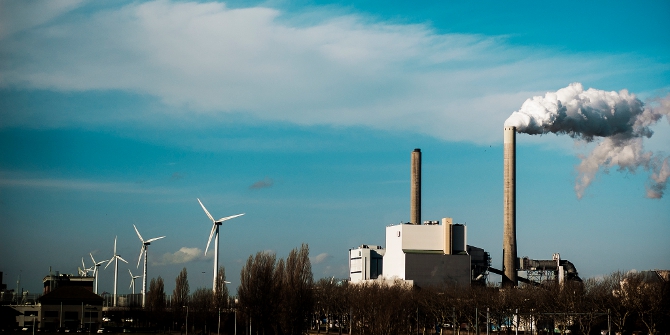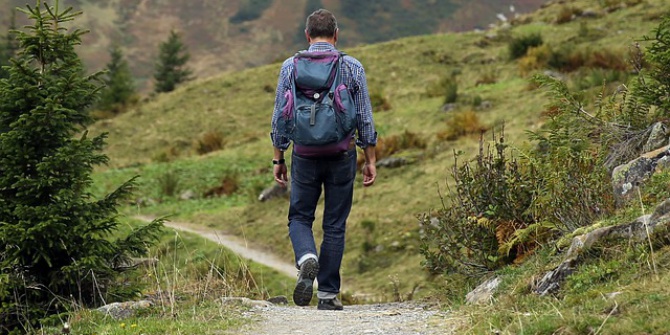
 Chile, Mexico, and the United States share many woes that hinder sustainable development. Daniel Kapellmann and Jamie Stark look at what could they learn from one another and at best-practice strategies that they could adopt from other OECD countries.
Chile, Mexico, and the United States share many woes that hinder sustainable development. Daniel Kapellmann and Jamie Stark look at what could they learn from one another and at best-practice strategies that they could adopt from other OECD countries.
Aside from being in the same western hemisphere Chile, Mexico, and the United States are markedly different. But all three are neighbors and have, at least, one thing in common. When it comes to meeting the United Nation’s Sustainable Development Goals these countries show enormous shortcomings. This is the result of the Bertelsmann Stiftung’s Sustainable Development Goals Index.
The index analyses all 34 OECD countries with regards to their preparedness for meeting the 17 Sustainable Development Goals, which the UN agreed upon in September 2015 to follow up on the anti-extreme poverty achievements of the Millennium Development Goals. The United States comes in at 29th, Chile at 31st, and Mexico is dead last at 34th place.
The index shows that Chile, Mexico, and the United States are not yet on track to complete the 2030 UN goals – for mostly unique reasons. Chile is generally doing well on environmental issues such as the protection of biodiversity and oceans as well as low levels of greenhouse gas emissions and municipal waste generation.
The US’s strengths are mainly in the economy and labor (high gross national income), city life (low particulate matter air pollution and large living space), general life satisfaction, education, and innovation expenditure. Mexicans benefit especially from low energy-related carbon dioxide emissions and little municipal waste generation. The country, in fact, shows the lowest levels of production-based CO2 emissions in the entire OECD – that is, below 5 tons per capita.
Shared woes in the Americas: poverty and inequality
There are two core indicators in which the three countries share equally poor performances: inequality and poverty. On poverty, the United States is in 30th place, Chile at 31st and Mexico at 34th place. On inequality, the US is 31st, Mexico 33rd, and Chile, 34th. Of course, poverty and inequality in industrialized countries differ in nature from those in developing nations like in Sub-Sahara Africa, but the three American countries should all more carefully plan and implement policies for addressing significant economic gaps within their population.
A widening gap between the richest 10 percent and poorest 10 percent is something that we can observe in almost all OECD countries. Still some nations are better than others at taking measures against poverty and inequality – the bases of any sustainable development.
Here the Czech Republic and the Nordic countries particularly stand out. In Europe’s North, transfer systems which target socially disadvantaged groups through, among others, child benefits and allowance schemes as well as housing benefits have been very effective in fostering more just societies.

Naturally, policies that work in one country don’t necessarily work in another. In contrast to Chile, Mexico, and the United States the OECD nations most prepared for achieving the Sustainable Development Goals share in many cases high general income levels and substantially smaller populations. Thus, it would be complicated to apply policies one-to-one in the Americas. But what it does show is that sound policy can make a difference.
Moreover, the comparison between the three American countries underlines that it doesn’t all depend on a given country’s income level. Mexico, for instance, which belong to the group of the upper-middle-income countries, is ranked 4th in the OECD in the PISA Social Justice Index. This means that inequality in socioeconomic background has comparatively little impact on student success. Tapping into all its intellectual resources is essential for a country’s future development.
Mexico also outperforms the United States and Chile on gender equality, based on the share of women in national parliaments and the pay gap between men and women. bThus, it is a good idea to try to learn from best practices from other countries, but it is also necessary to adapt each and every policy to each American country’s context in order to truly achieve a significant change.
One-fits-all strategies for sustainable development won’t work
The United States might also learn from its neighbors when it comes to environmental issues. The US receives particularly low marks in the Bertelsmann index for having high CO2 and greenhouse gas emissions. The Obama administration has instituted higher standards for auto emissions, set to take effect by 2025. But auto emissions are less than 30 percent of the US contribution to climate change. If the US want to meet the Sustainability Development Goals, they will need to take policy steps concerned with industry and electricity production, which accounts for more than half of the nation’s air pollution.
In the case of Mexico and Chile, their main concerns are currently focused on targeting inequality and education. Here the aim should be to improve the quality of schooling and enable more people to attain upper secondary education. A series of structural reforms that have been taking place in both Chile and Mexico will surely have an impact on their development. While Chile is adopting a position more focused on productivity and economic growth, Mexico will have to more urgently address security, competitiveness, and energy concerns.
Arriving at one-fits-all strategies for sustainable development preparedness is not realistic. Rather it’s necessary to separately analyze the different key strengths and weaknesses for each country in the heterogeneous American region in order to achieve relevant conclusions that could lead to further development aligned with UN’s efforts for the next 15 years. That’s a necessary analysis if the OECD signatories of the Sustainable Development Goals hope to achieve their aims.
Featured image credit: chriscrowder_4 (Flickr, CC-BY-NC-ND-2.0)
Please read our comments policy before commenting.
Note: This article gives the views of the author, and not the position of USAPP – American Politics and Policy, nor the London School of Economics.
Shortened URL for this post: http://bit.ly/1Z1XJC4
_________________________________
 Daniel Kapellmann – University of Washington
Daniel Kapellmann – University of Washington
Daniel Kapellmann is a Mexican international relations graduate and IT Consultant for The Competitive Intelligence Unit. He currently studies the Master of Science in Information Management at the University of Washington. Contact him on Twitter at @Kapellmann.
 Jamie Stark
Jamie Stark
Jamie Stark is an American journalist based in Latin America and a graduate of the University of Wisconsin Journalism School. Contact him on Twitter at @JamieStark.






